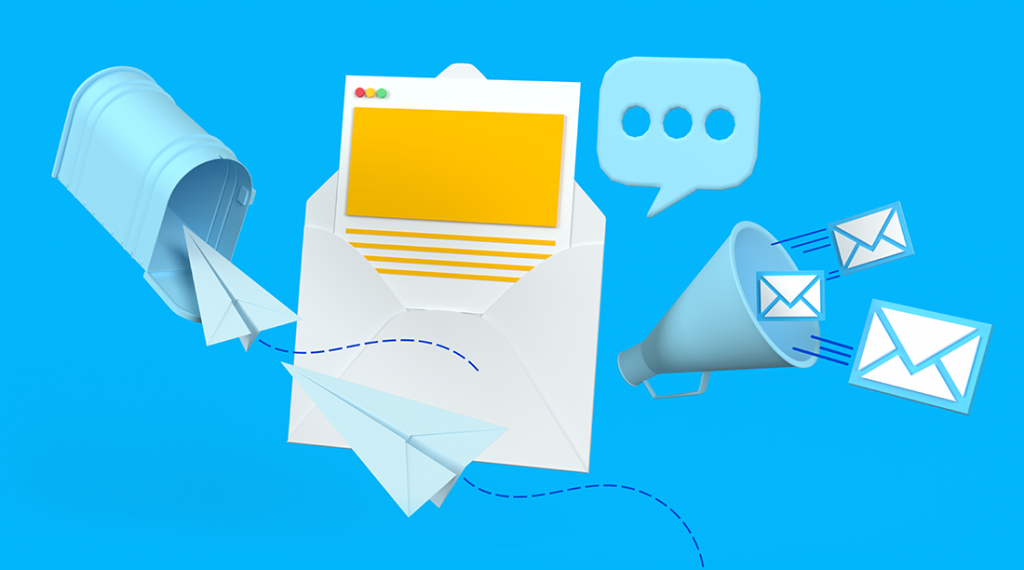Email Retargeting: How to Bring Back Visitors and Increase Sales
In today’s digital marketplace, attracting visitors to a website is just one step in the sales journey. Many visitors often leave without making a purchase, whether due to distractions, comparison shopping, or hesitancy to commit. This is where email retargeting steps in. By strategically using email retargeting, businesses can reach out to these potential customers, reminding them of products or services they’ve shown interest in and encouraging them to complete their purchases. In this article, we’ll explore the concept of email retargeting, how it works, and why it’s one of the most effective methods to bring back visitors and increase sales.
What is Email Retargeting?
Email retargeting is a digital marketing strategy that involves sending targeted emails to people who have previously visited a website but did not take a desired action, such as making a purchase or signing up for a newsletter. By using insights about visitors’ browsing behaviour, businesses can create tailored emails that gently nudge them back toward completing a transaction. This approach is not only cost-effective but also highly efficient, as it directly reaches individuals who have already shown some level of interest.

Why is Email Retargeting Important?
Every day, countless potential sales are lost as visitors abandon websites before converting. According to research, over 70% of online shopping carts are abandoned, representing a massive amount of lost revenue. Email retargeting can capture some of this lost potential by providing a second (or even third) opportunity to re-engage visitors. Unlike generic marketing emails, retargeted emails are specifically tailored to users’ recent activity, making them more relevant and compelling.
Key benefits of email retargeting include:
- Personalised communication that resonates with the user.
- Increased conversion rates due to targeted messaging.
- Higher ROI by focusing on warm leads instead of cold contacts.
How Does Email Retargeting Work?
Email retargeting typically relies on tracking cookies or pixels that monitor user behaviour on a website. When a visitor takes certain actions—like viewing a product page or adding an item to their shopping cart—this behaviour is logged. If the user leaves without completing the transaction, an email can be sent to remind them of the items they left behind.
The process generally includes three key steps:
- Tracking Website Activity: Using cookies, marketers can observe visitor interactions on specific pages, such as product views or abandoned carts.
- Segmenting Visitors: Based on behaviour, visitors are segmented into categories such as cart abandoners, product viewers, and past customers. This segmentation enables highly relevant messaging.
- Sending Personalised Emails: Automated emails are triggered according to visitor behaviour, delivering tailored content like reminders, product suggestions, or special offers.
Types of Email Retargeting Campaigns
Effective email retargeting campaigns can take various forms, depending on the type of behaviour marketers aim to target. Here are some common types:
1. Cart Abandonment Emails
One of the most common forms, cart abandonment emails target users who added items to their cart but didn’t check out. These emails usually contain the abandoned items and may include an incentive, like a discount, to encourage the user to complete their purchase.
2. Browse Abandonment Emails
These emails are aimed at visitors who viewed specific products or categories but didn’t add them to their cart. A well-timed email can prompt them to reconsider and revisit the site.
3. Post-Purchase Upsell and Cross-Sell Emails
After a customer completes a purchase, email retargeting can encourage additional sales through cross-sell or upsell offers, highlighting related or complementary products.
4. Re-Engagement Emails for Past Customers
For customers who haven’t made a purchase in a while, re-engagement emails can remind them of the brand, showcase new products, or offer a special promotion to spark their interest.
Tips for Creating Effective Email Retargeting Campaigns
To make the most of email retargeting, businesses need to craft emails that are engaging, relevant, and action-oriented. Here are some key strategies:
1. Use Personalised Content
Personalisation is essential in email retargeting. Including the customer’s name, showcasing products they viewed, or mentioning previous purchases makes the email more engaging and personal.
2. Provide Clear Calls-to-Action (CTAs)
Every email should contain a clear, prominent call-to-action. Whether it’s “Complete Your Purchase” or “Browse Similar Items,” the CTA should be direct and persuasive, guiding users towards the desired action.
3. Offer Incentives
Discounts, free shipping, or exclusive offers can provide the nudge needed to turn an undecided visitor into a buyer. Be mindful, however, not to overuse incentives, as this can erode the perceived value of products over time.
4. Optimise for Mobile Devices
Since a significant percentage of emails are opened on mobile devices, ensuring mobile compatibility is critical. A responsive design with short, concise text and clickable buttons improves usability and engagement on smaller screens.
5. Time Your Emails Appropriately
Timing plays a critical role in email retargeting. For example, a cart abandonment email sent within 24 hours of abandonment is often more effective than one sent days later. Scheduling a series of follow-up emails over a short period can further improve conversion chances.
Tracking and Measuring the Success of Email Retargeting Campaigns
To gauge the effectiveness of an email retargeting campaign, businesses should track several key metrics:
- Open Rate: The percentage of recipients who open the retargeting email.
- Click-Through Rate (CTR): The percentage of opened emails that result in clicks on the call-to-action.
- Conversion Rate: The number of recipients who take the desired action, such as completing a purchase.
- Revenue Generated: The total revenue attributed to the retargeting emails, providing a clear picture of ROI.
By continuously monitoring these metrics, marketers can refine their strategy, adjusting content, timing, and segmentation as needed to improve results.
Best Practices for Ethical and Effective Email Retargeting
While email retargeting is a powerful tool, it’s important to use it ethically to avoid overwhelming or annoying potential customers. Here are some best practices:
- Respect User Privacy: Be transparent about data collection practices and provide an option for users to opt out of tracking if they choose.
- Limit Email Frequency: Sending too many emails can lead to higher unsubscribe rates. A balance is needed to keep users engaged without feeling overwhelmed.
- Provide Easy Unsubscribe Options: Always include an unsubscribe link to ensure compliance with regulations and maintain user trust.
- Align with Brand Messaging: Each retargeting email should feel consistent with your brand’s voice and values, reinforcing a positive connection with potential customers.
Conclusion
Email retargeting is a highly effective strategy for converting hesitant visitors into loyal customers. By sending timely, personalised emails that respond directly to user behaviour, businesses can reduce cart abandonment rates, re-engage past visitors, and ultimately increase their revenue. Through understanding customer behaviours, tailoring messages, and providing thoughtful incentives, businesses can leverage email retargeting to build lasting relationships with customers. As competition grows in the online marketplace, implementing a smart email retargeting strategy is crucial for any business aiming to optimise its conversion rates and drive sustainable growth.
FAQs
1. What is the difference between email retargeting and regular marketing emails?
Email retargeting is specifically aimed at users based on their behaviour on a website, such as cart abandonment, whereas regular marketing emails are often more general and sent to a broader audience.
2. How often should I send retargeting emails?
A typical retargeting sequence includes 2-3 emails over a few days to avoid overwhelming the recipient.
3. Can email retargeting work for non-e-commerce businesses?
Yes, email retargeting can benefit any business looking to re-engage website visitors, including service-based businesses or B2B companies.
4. Is email retargeting GDPR-compliant?
Email retargeting can be GDPR-compliant as long as businesses have user consent for tracking and provide opt-out options.
5. What’s a good open rate for retargeting emails?
A 20-30% open rate is typical for well-targeted retargeting emails, though rates can vary by industry.




